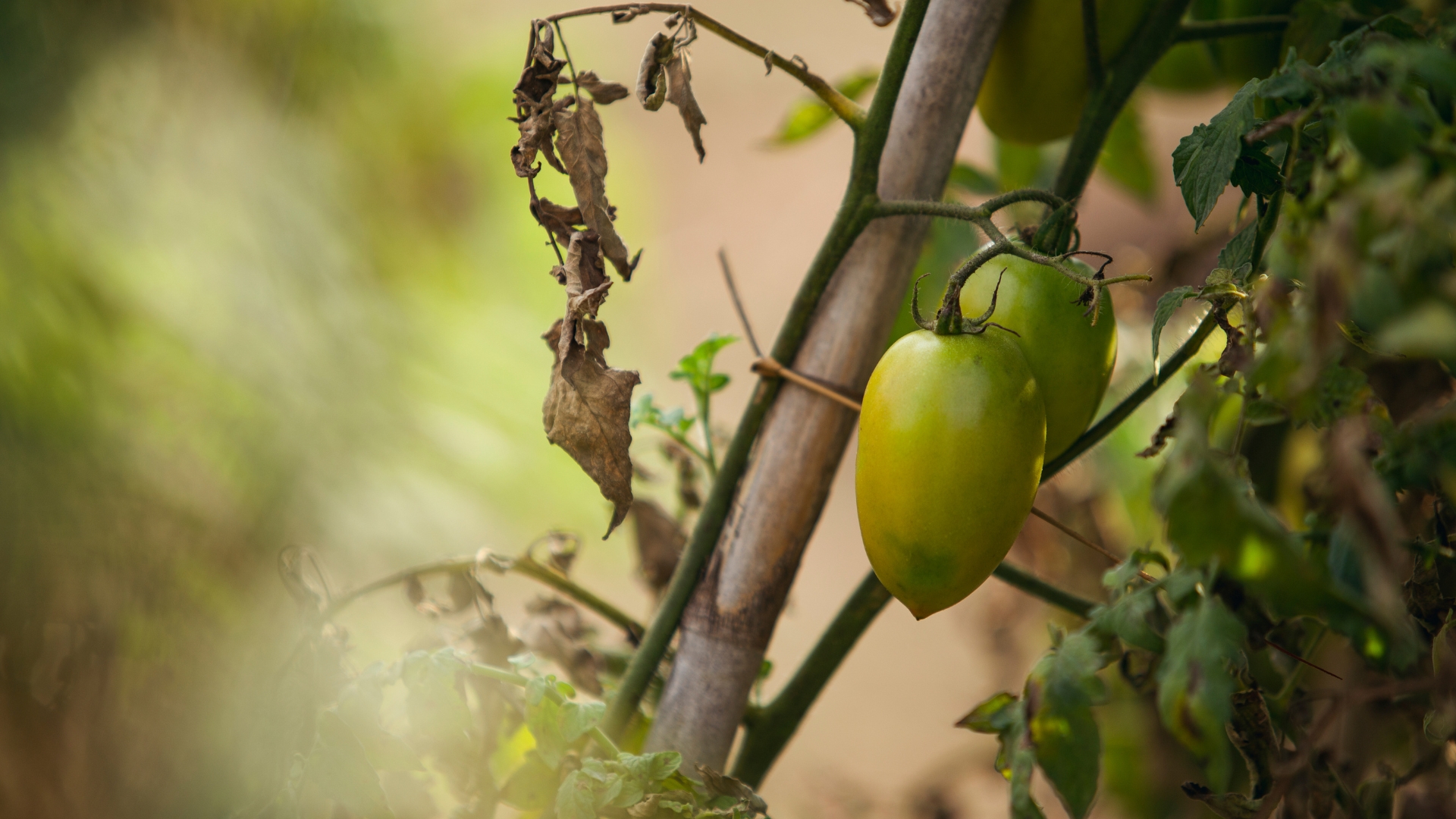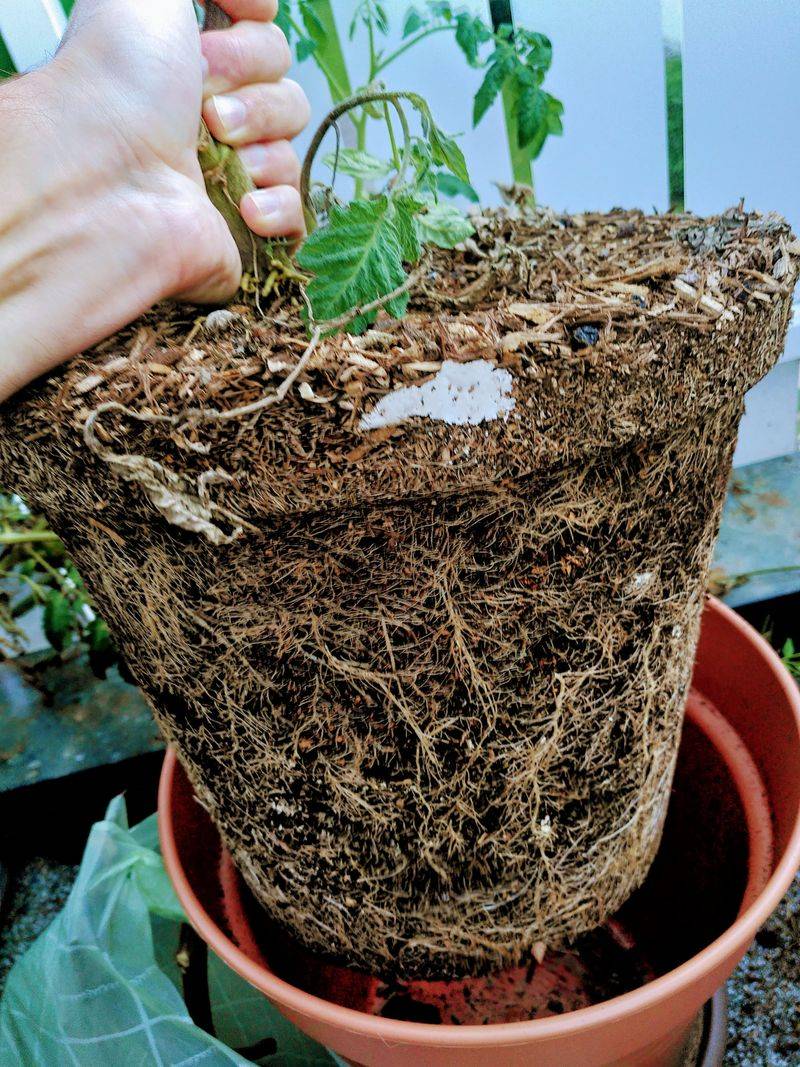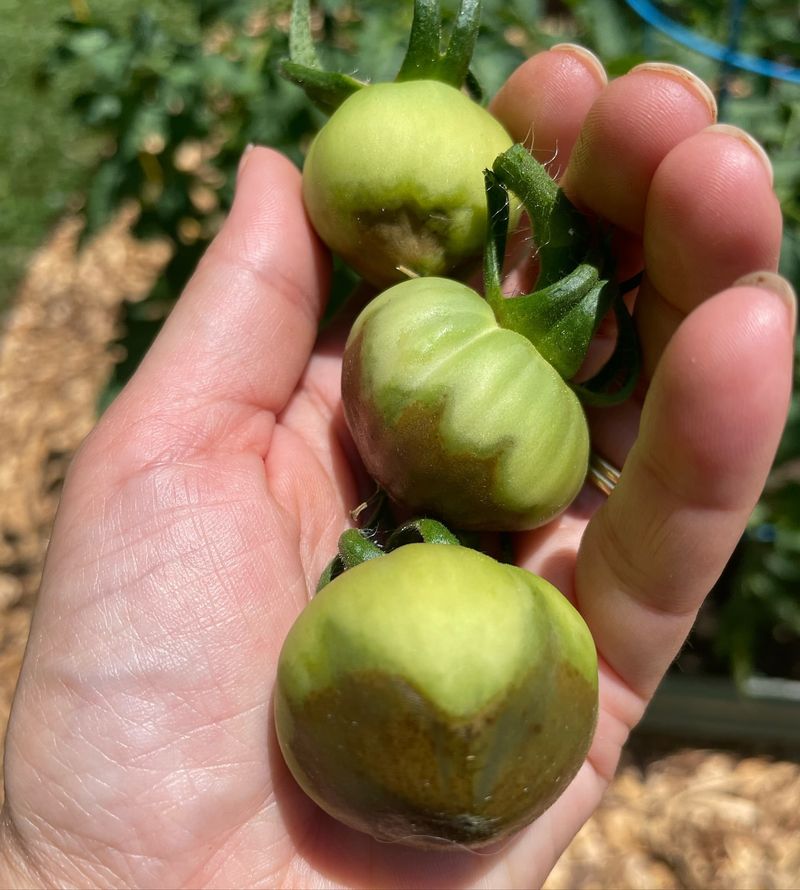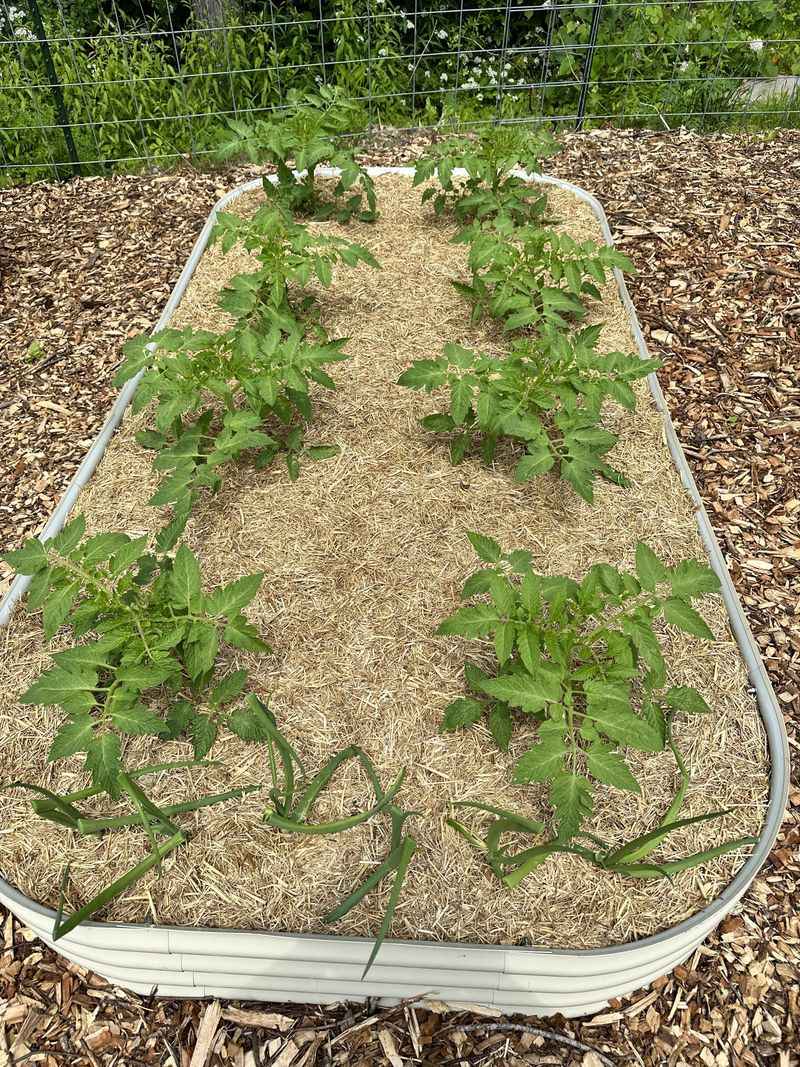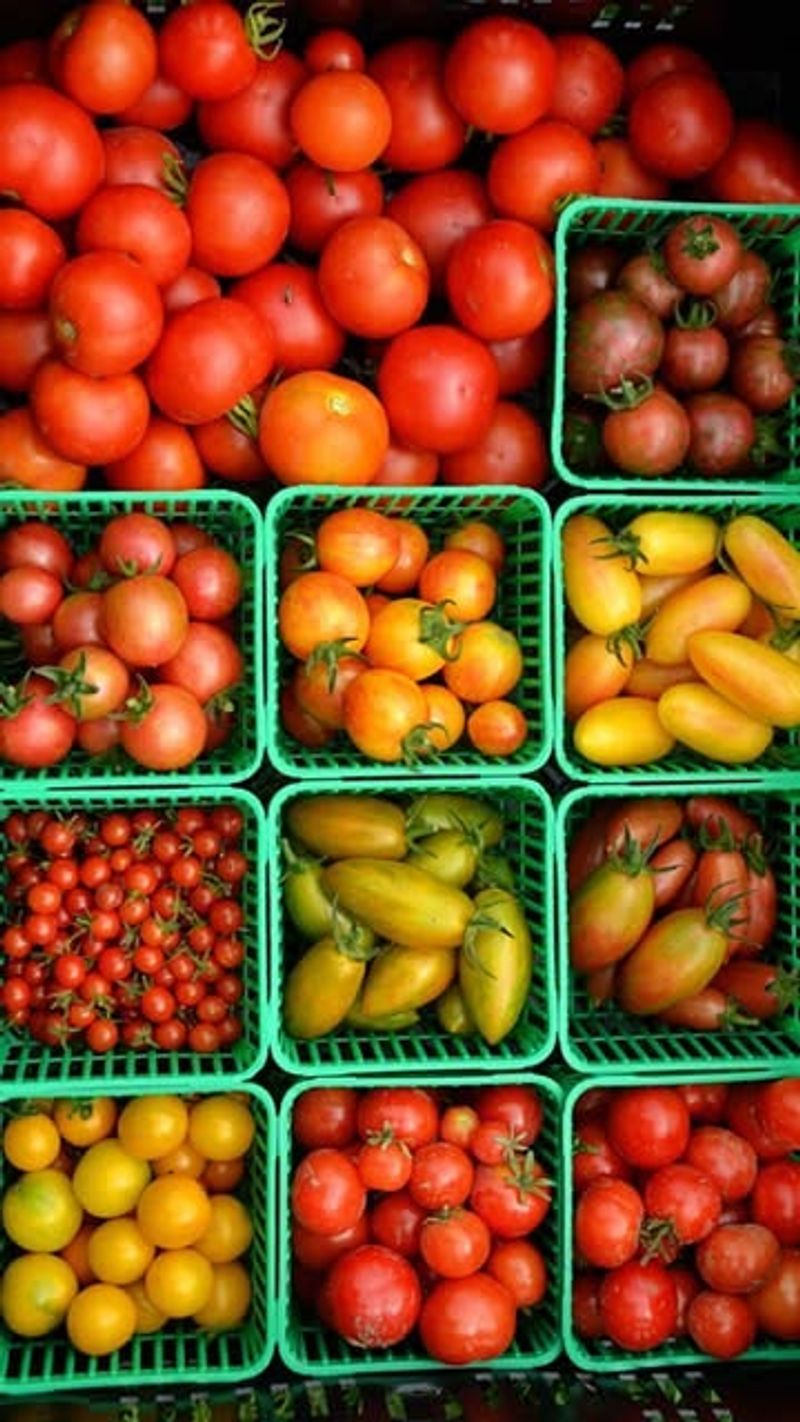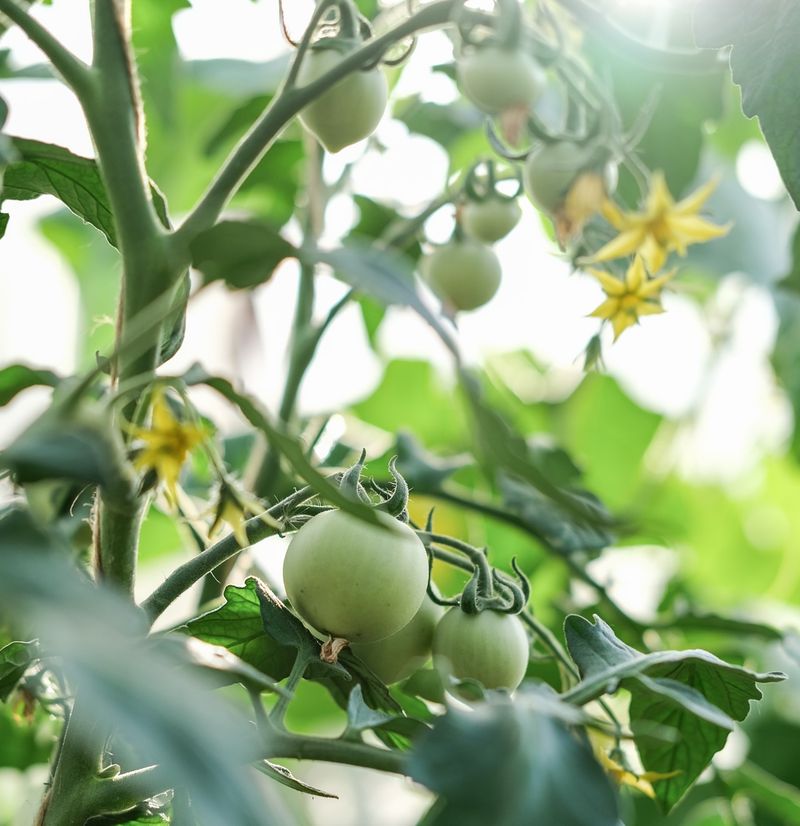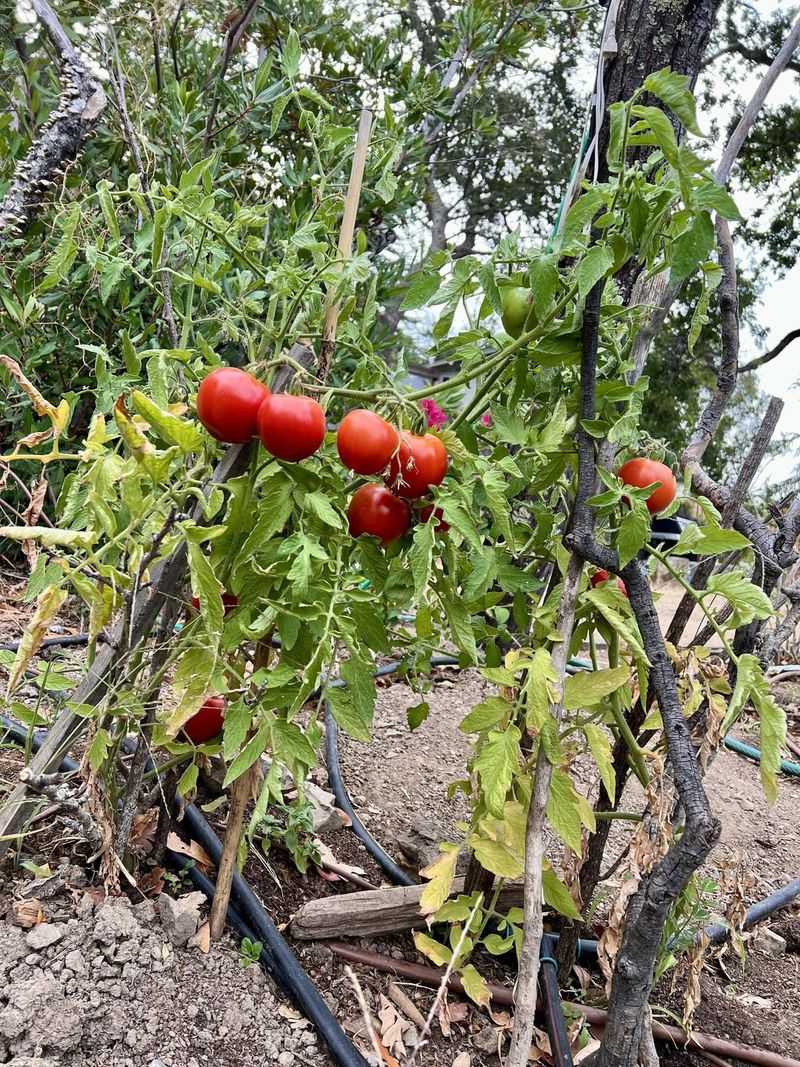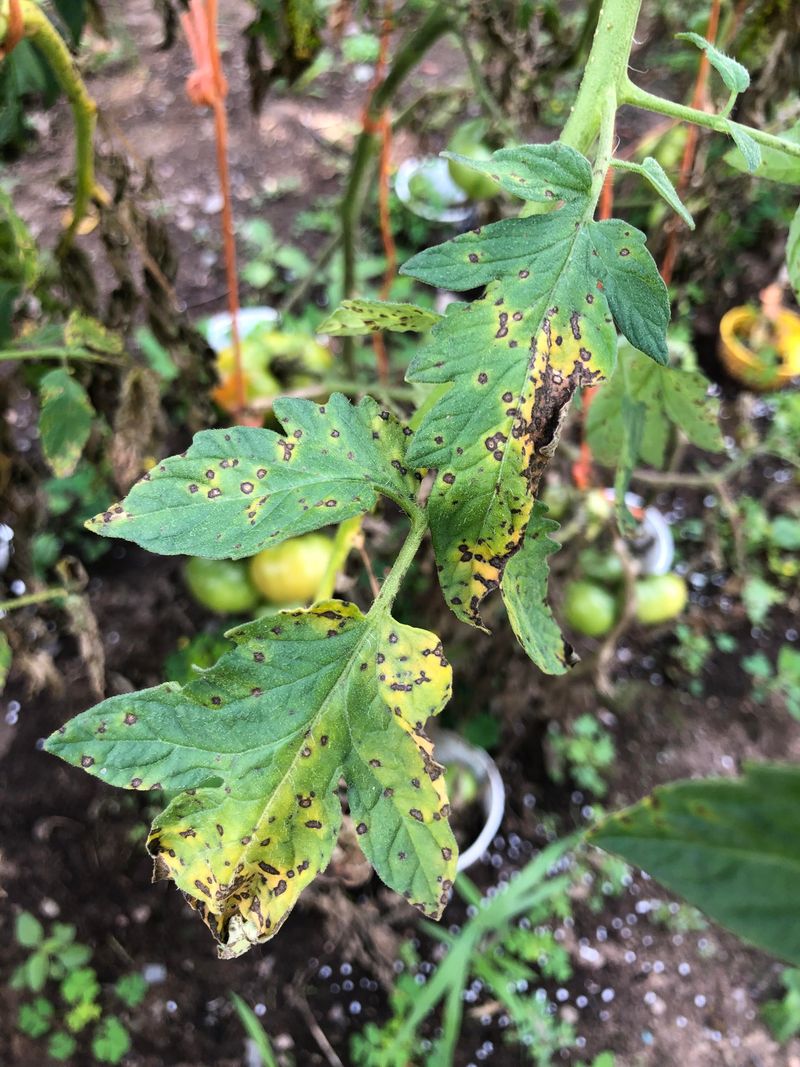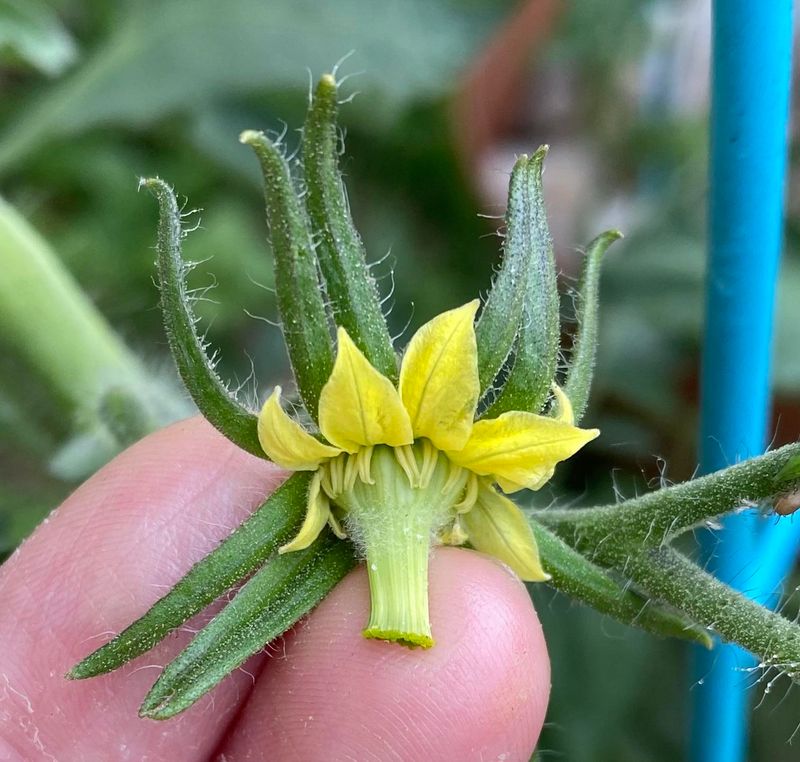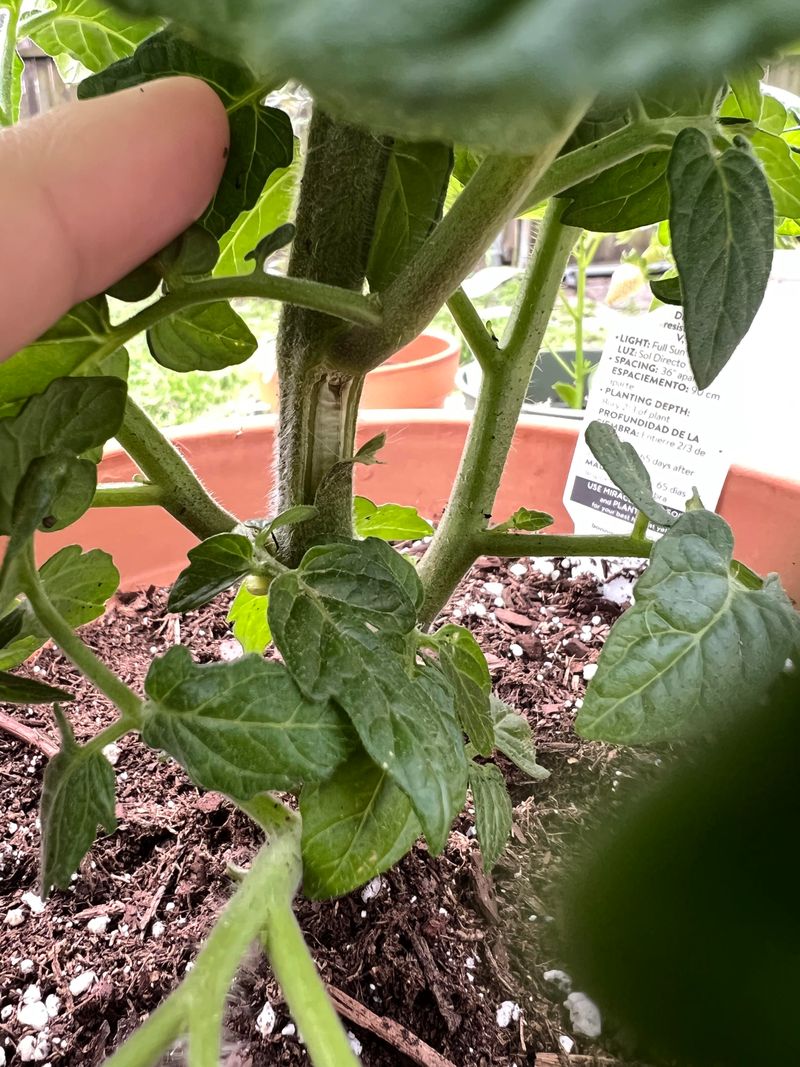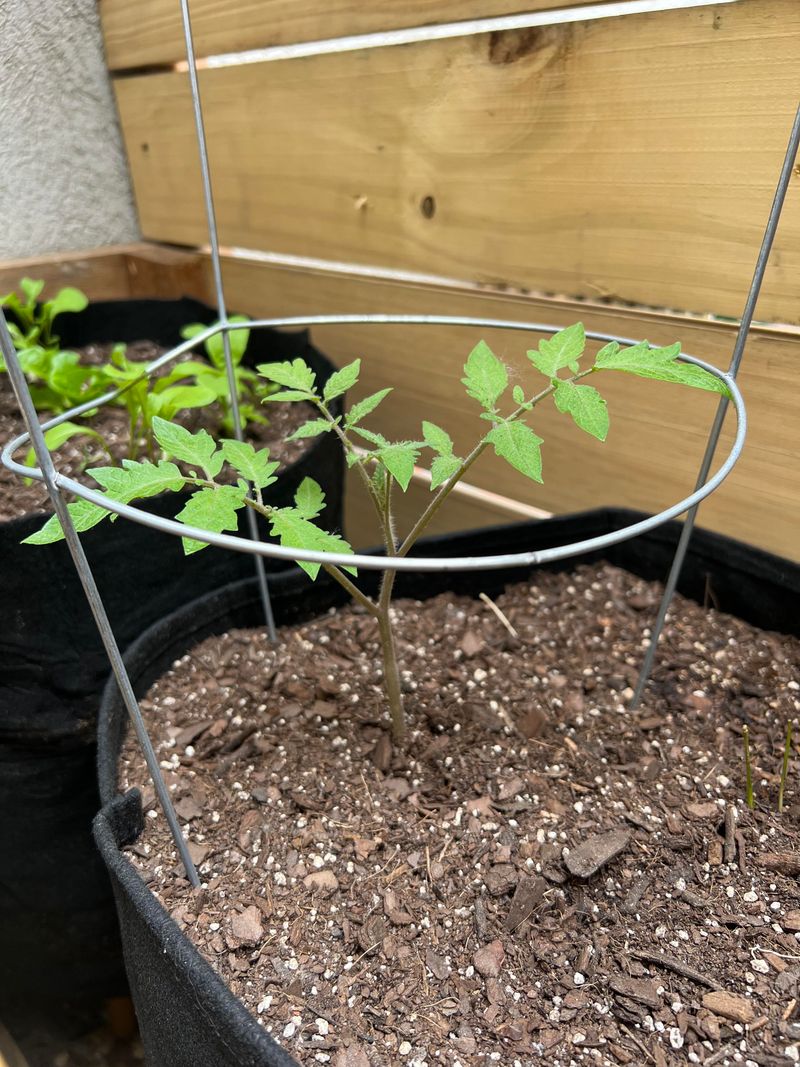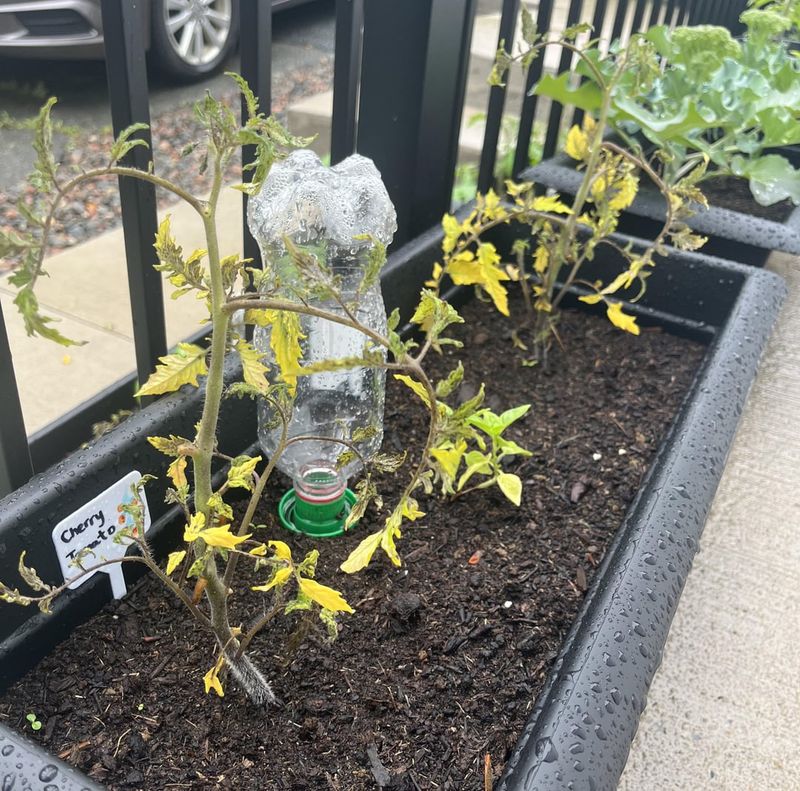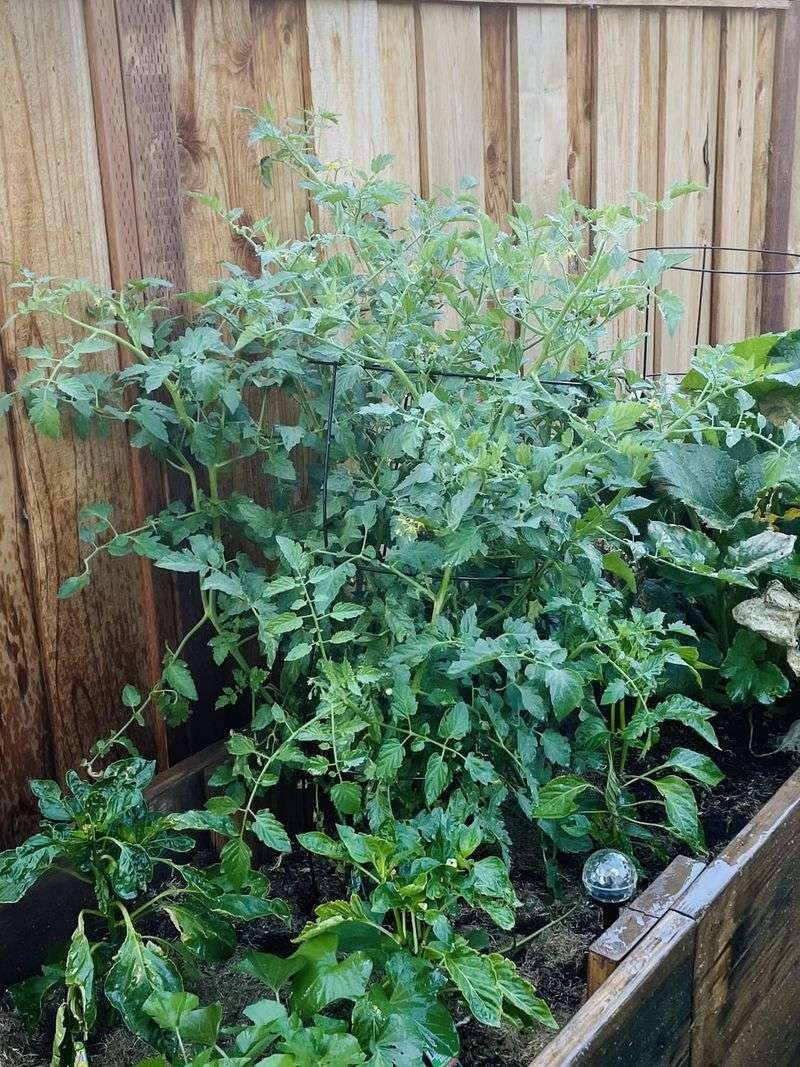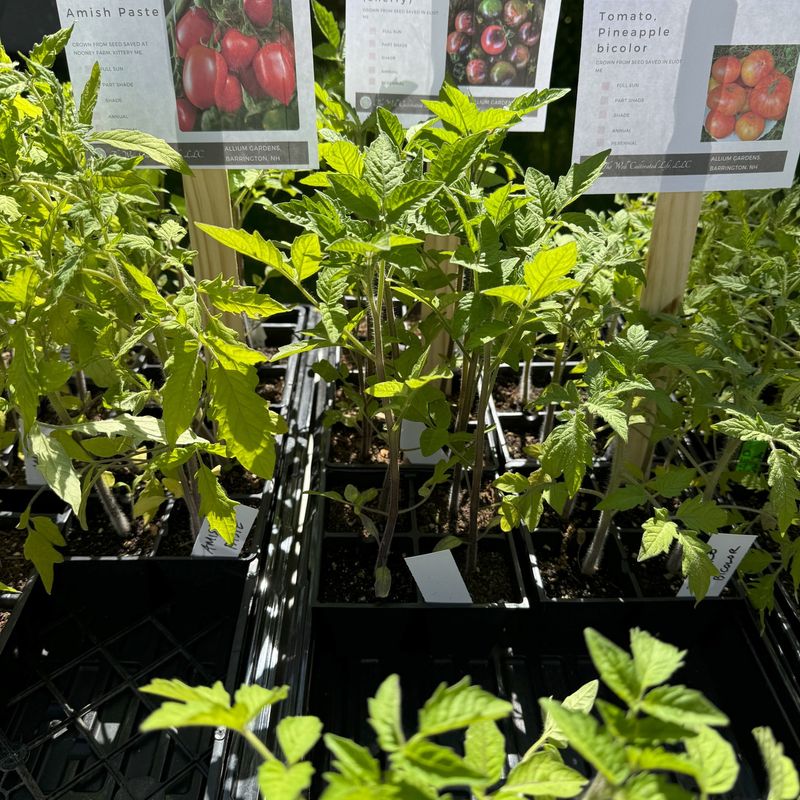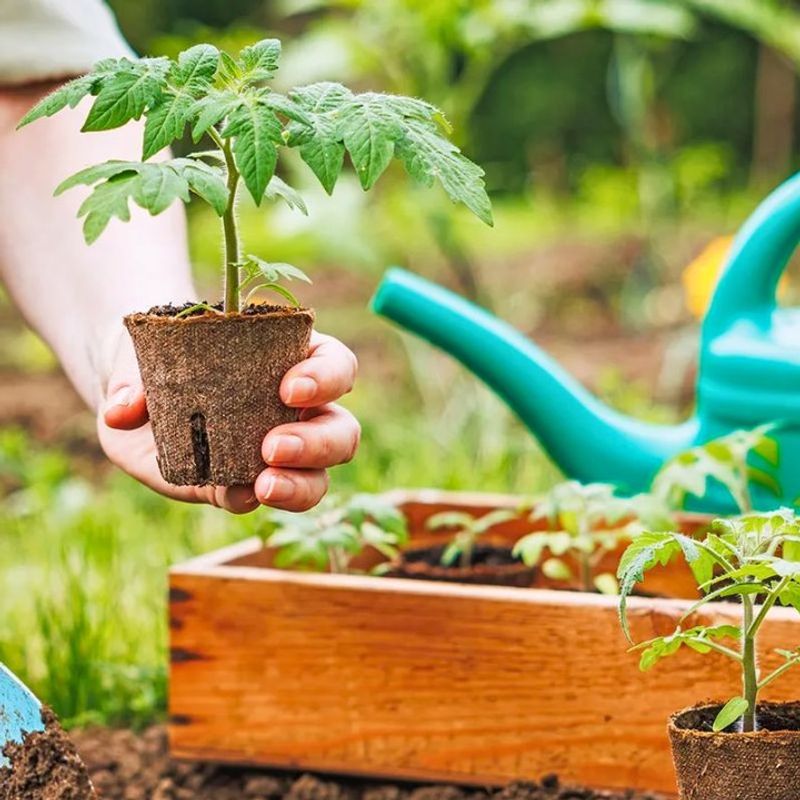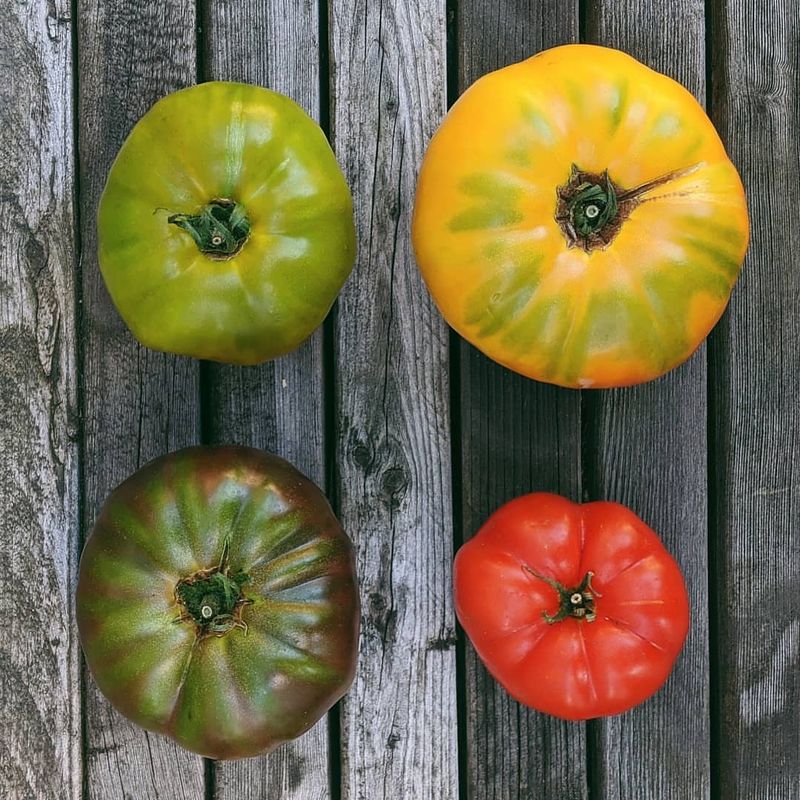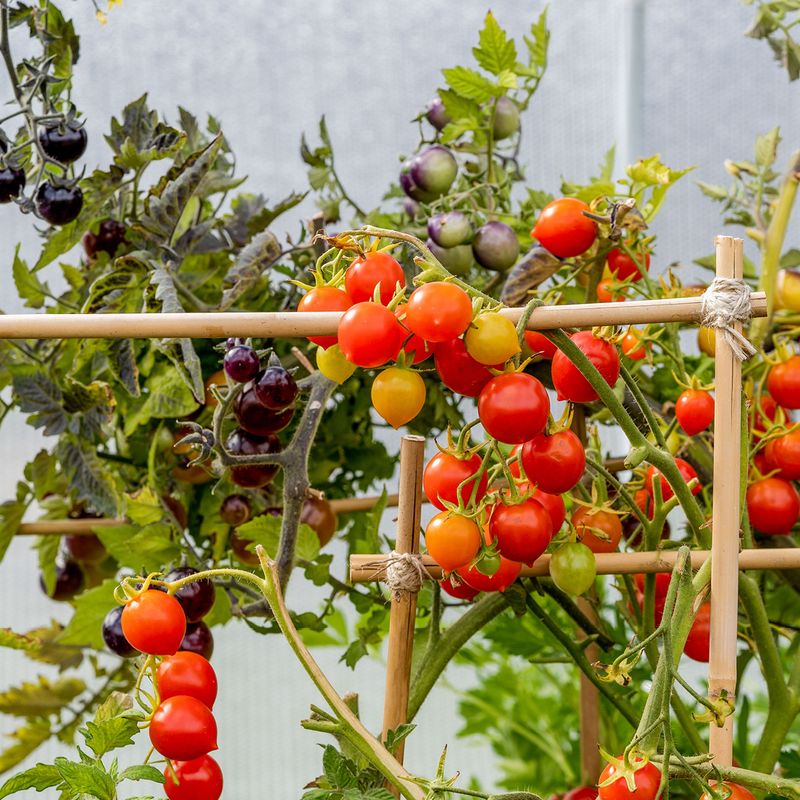Small, underwhelming tomatoes? You’re not alone. From poor pollination to nutrient slip-ups, these 17 issues could be stunting your crop.
Luckily, each one has a quick fix to help your tomato plants bounce back bigger, juicier, and more productive next season.
1. Poor Soil Fertility
Tomatoes are hungry plants that need nutrient-rich soil to produce big fruits. When soil lacks essential nutrients like nitrogen, phosphorus, and potassium, your plants can’t build the energy reserves needed for large tomatoes.
Before planting next season, mix in plenty of compost or aged manure to boost soil fertility. A soil test can reveal exactly what your garden needs. For a quick fix this season, apply a balanced organic fertilizer specifically formulated for tomatoes.
2. Insufficient Watering
Inconsistent watering creates stress for tomato plants, forcing them to focus on survival rather than fruit development. The result? Smaller tomatoes that never reach their full potential.
Aim for deep watering 2-3 times weekly rather than frequent shallow watering. This encourages deeper root growth and more resilient plants. Adding mulch around plants helps retain moisture and prevents the soil from drying out too quickly between waterings.
3. Overcrowded Plants
Tomato plants need personal space! When planted too closely together, they compete for sunlight, nutrients, and water. The competition means less energy for each plant to produce large fruits.
Space determinate varieties at least 2 feet apart and indeterminate types 3-4 feet apart. If your plants are already in the ground and crowded, carefully prune some branches to improve airflow and light penetration. Next season, follow spacing guidelines on seed packets.
4. Wrong Variety Selection
Not all tomato varieties are created equal! Some types naturally produce small fruits regardless of growing conditions. Cherry tomatoes will never grow to beefsteak size, no matter how perfect your care is.
Check seed packets or plant labels carefully. For truly big tomatoes, look for varieties like ‘Beefsteak,’ ‘Big Boy,’ or ‘Mortgage Lifter.’ These are specifically bred for size. Keep in mind that heirloom varieties often produce larger fruits than many hybrids.
5. Temperature Extremes
Tomatoes are surprisingly picky about temperature. When thermometers climb above 85°F or drop below 55°F, pollen becomes less viable, affecting fruit development and size.
During heat waves, provide afternoon shade with row covers or shade cloth. For cool periods, consider plastic covers or water-filled protection like Wall O’ Water. Planting heat-tolerant varieties in hot climates or cold-tolerant types in shorter-season areas makes a big difference too.
6. Insufficient Sunlight
Tomatoes are sun-worshippers that need at least 6-8 hours of direct sunlight daily. When they don’t get enough light, photosynthesis slows down, reducing the energy available for fruit production.
Observe your garden throughout the day to identify the sunniest spots. If trees or structures cast shadows on your tomato patch, consider relocating plants next season. For potted tomatoes, simply move them to brighter locations to maximize sun exposure.
7. Pest Damage
Tomato hornworms, aphids, and other pests don’t just damage leaves – they stress the entire plant. When a tomato plant is fighting off invaders, it diverts energy from fruit production to defense mechanisms.
Inspect plants regularly, checking under leaves where pests often hide. Introduce beneficial insects like ladybugs or use organic insecticidal soap for minor infestations. For hornworms, handpicking remains surprisingly effective despite being somewhat gross!
8. Disease Pressure
Fungal and bacterial diseases like early blight, late blight, and bacterial spot weaken tomato plants dramatically. Infected plants struggle to photosynthesize efficiently, resulting in smaller fruits.
Prevent disease by watering at the base rather than overhead. Remove and destroy (don’t compost) any infected leaves immediately. Rotating where you plant tomatoes each year prevents disease buildup in soil. Disease-resistant varieties offer another layer of protection.
9. Poor Pollination
Tomatoes need proper pollination to develop fully. While they’re self-pollinating, they still benefit from a little help, especially when grown in greenhouses or during periods with few pollinators around.
Gently shake your tomato plants during flowering to help spread pollen. This simple action mimics what happens naturally in windy conditions. For indoor tomatoes, use an electric toothbrush (gently!) against flower stems to vibrate pollen loose.
10. Improper Pruning
Tomato plants with too many suckers (side shoots) divide their energy among numerous growing points instead of focusing on fruit development. The result is many small tomatoes rather than fewer large ones.
For indeterminate varieties, remove suckers that form in the crotch between the main stem and branches. Leave the main growing tip and several strong branches. Determinate tomatoes need less pruning – just remove shoots below the first flower cluster.
11. Container Constraints
Growing tomatoes in containers that are too small restricts root development. Limited root space means limited nutrient uptake, which directly affects fruit size.
Choose containers at least 5 gallons in size for most tomato varieties. Larger 10-15 gallon containers are even better for indeterminate types. Ensure containers have proper drainage holes. If your plants are already in small pots, increase watering and fertilizing frequency.
12. Incorrect pH Levels
Tomatoes prefer slightly acidic soil with a pH between 6.0 and 6.8. When soil is too acidic or too alkaline, nutrients become less available to plants, even if they’re present in the soil.
Test your soil pH with an inexpensive kit from a garden center. Add lime to raise pH if it’s too acidic, or sulfur to lower pH if it’s too alkaline. For container gardens, start with a high-quality potting mix specifically formulated for vegetables.
13. Excessive Nitrogen
Too much nitrogen fertilizer promotes lush, green growth at the expense of fruit production. Plants become tall and leafy but produce smaller tomatoes.
Switch to a fertilizer with less nitrogen and more phosphorus and potassium once plants start flowering. Look for formulations like 5-10-10 or similar ratios where the first number (nitrogen) is lower than the others. Avoid high-nitrogen lawn fertilizers near your tomato patch.
14. Transplant Shock
Young tomato plants that experience stress during transplanting may never fully recover. This early setback can permanently affect their ability to produce large fruits.
Harden off seedlings gradually before planting outdoors. Spend 7-10 days acclimating them to outdoor conditions, starting with an hour of sun and increasing daily. When transplanting, disturb roots as little as possible and water immediately after planting.
15. Late Planting
Tomatoes need a full growing season to reach maximum size. Plants that go into the ground late have less time to establish strong root systems before they start producing fruit.
Mark your calendar for next year based on your local last frost date. Start seeds indoors 6-8 weeks before that date. If you’re buying transplants, get them in the ground as soon as temperature allows. For this season, focus on maximizing growth with proper care.
16. Genetic Limitations
Sometimes small tomatoes result from saved seeds that have cross-pollinated with smaller varieties. This genetic mixing can result in fruits that don’t match the parent plant’s characteristics.
Purchase fresh seeds from reputable sources each year if size is important to you. If you save seeds, isolate tomato varieties by distance or use blossom bags to prevent cross-pollination. Hybrid varieties won’t grow true from saved seed, so always buy new seeds for these types.
17. Poor Support Systems
Tomato plants that flop on the ground or have inadequate support develop stressed stems that affect nutrient flow to fruits. Plants use energy to redirect growth upward rather than developing larger fruits.
Install sturdy cages, stakes, or trellises when plants are young. Secure plants to supports using soft ties that won’t damage stems. For heavy-fruiting varieties, consider the Florida weave system using stakes and twine between plants for excellent support.

